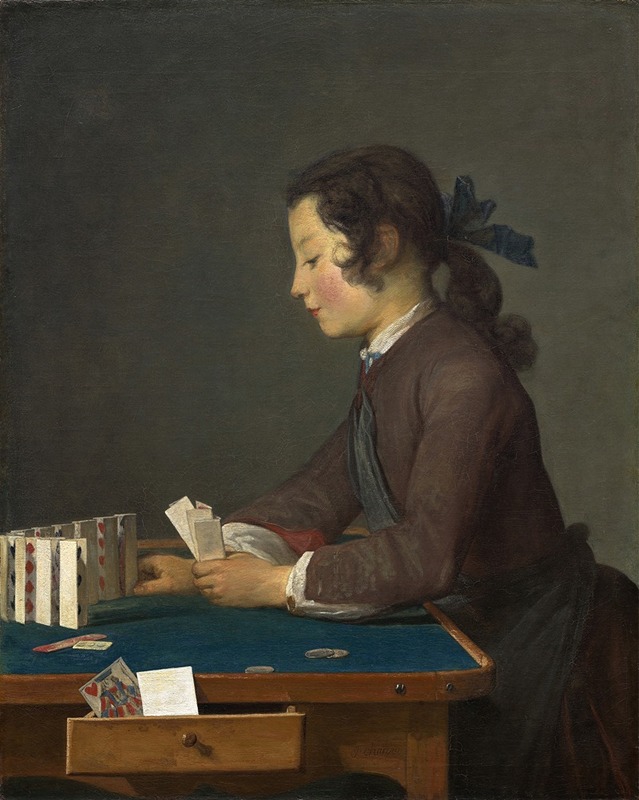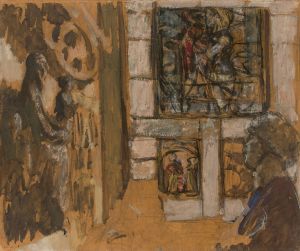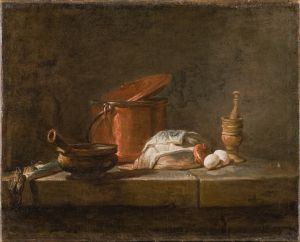
The House of Cards
A hand-painted replica of Jean Siméon Chardin’s masterpiece The House of Cards, meticulously crafted by professional artists to capture the true essence of the original. Each piece is created with museum-quality canvas and rare mineral pigments, carefully painted by experienced artists with delicate brushstrokes and rich, layered colors to perfectly recreate the texture of the original artwork. Unlike machine-printed reproductions, this hand-painted version brings the painting to life, infused with the artist’s emotions and skill in every stroke. Whether for personal collection or home decoration, it instantly elevates the artistic atmosphere of any space.
Jean Siméon Chardin, a prominent French painter of the 18th century, is renowned for his exquisite still lifes and genre paintings that capture the quiet, everyday moments of life. One of his notable works is "The House of Cards," a painting that exemplifies his skill in portraying domestic scenes with a sense of tranquility and introspection.
"The House of Cards" was painted by Chardin in the mid-18th century, a period when he was deeply engaged in exploring themes of childhood and domesticity. This painting is part of a series that Chardin created, focusing on young boys absorbed in the delicate and precarious task of building card structures. The series includes several versions, each depicting a slightly different arrangement and setting, but all maintaining the central theme of concentration and the transient nature of the activity.
In "The House of Cards," Chardin presents a young boy, deeply engrossed in the construction of a card tower. The boy is depicted with a focused expression, highlighting the intensity and seriousness with which children approach their play. The setting is simple and unadorned, drawing attention to the boy and his task. Chardin's use of muted colors and soft lighting creates a serene atmosphere, emphasizing the quietude of the moment.
Chardin's technique in this painting is characteristic of his broader oeuvre. He employs a restrained palette and subtle gradations of light and shadow to create a sense of depth and volume. The textures of the boy's clothing and the cards are rendered with meticulous attention to detail, showcasing Chardin's mastery of still life elements even within a genre scene. The composition is carefully balanced, with the boy positioned slightly off-center, allowing the viewer's eye to travel across the canvas and appreciate the delicate balance of the card structure.
"The House of Cards" is often interpreted as a metaphor for the fragility and impermanence of human endeavors. The boy's concentration and the precarious nature of the card tower can be seen as a reflection on the transient nature of life and the care required to maintain balance and order. This theme resonates with the Enlightenment ideals of the time, which emphasized reason, observation, and the pursuit of knowledge.
Chardin's work, including "The House of Cards," was highly regarded during his lifetime and continues to be celebrated for its subtlety and depth. His ability to capture the essence of everyday life with such precision and empathy has earned him a lasting place in the history of art. Today, "The House of Cards" is housed in several prestigious collections, including the Louvre Museum in Paris, where it continues to be admired by art enthusiasts and scholars alike.
Through "The House of Cards," Chardin invites viewers to pause and reflect on the simple yet profound moments of life, encouraging an appreciation for the beauty and complexity found in the ordinary.

















